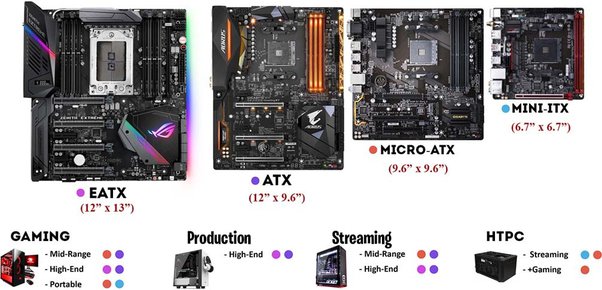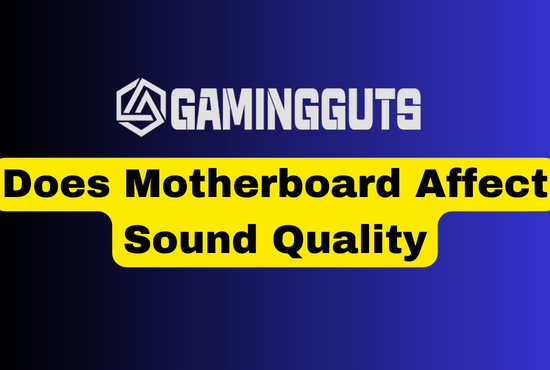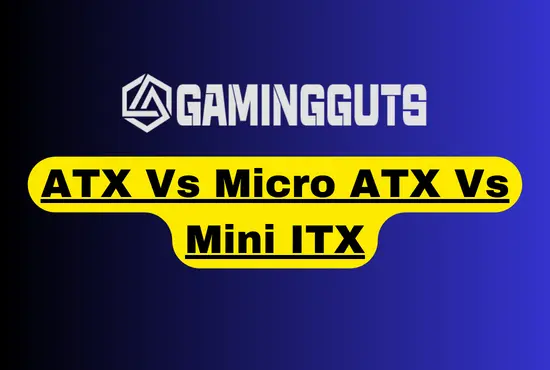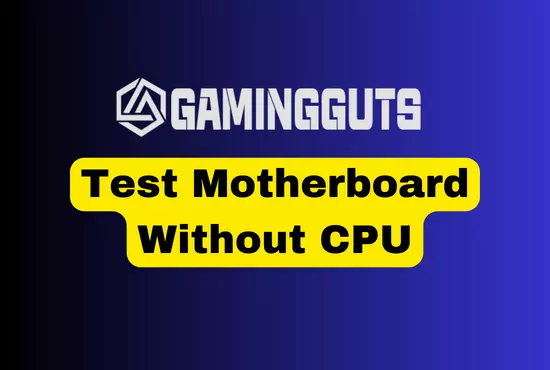Deciding on a new PC case and motherboard are pivotal steps when building your own computer. But one question many first-time builders face is “How do I know if a motherboard will fit in my case?”
First of all, you should know that every motherboard and case has a different size, so the answer is NO. There are other factors too which involve in this.

Photo Credit: QUORA
It’s an important consideration because compatibility issues can bring your whole build to a grinding halt.
As an experienced PC builder, in this comprehensive guide, I’ll share the key details you need to know to successfully match a motherboard and case.
With the right information upfront, you can avoid frustrations during the assembly process.
With this knowledge in hand, you’ll be able to expertly pair the motherboard and the case for a smooth PC-building experience. So whether this is your first build or an upgrade, read on to become informed on this crucial aspect of PC assembly.
Here are a few things you need to keep in mind while checking if a Motherboard Will Fit In Case or Not:
Motherboard Form Factors
When selecting a motherboard, one of the first things to consider is the form factor. Motherboard form factors dictate the size and shape of the board, which directly impacts compatibility with PC cases. There are several common form factors worth knowing:
- ATX – This is the standard motherboard form factor used in most desktop PCs. ATX boards measure 12 x 9.6 inches and feature multiple expansion slots for graphics cards, RAM, and more. ATX boards fit in the majority of mid to full-tower cases.
- Micro-ATX – As the name suggests, Micro-ATX boards are a smaller version of the standard ATX form factor. They measure 9.6 x 9.6 inches, so they take up less space but still provide multiple expansion slots. Micro-ATX is common in compact cases and small form factor builds.
- Mini-ITX – Designed for tiny PCs, the Mini-ITX form factor measures just 6.7 x 6.7 inches. These boards only have one expansion slot and fit in very small cases optimized for portability and limited space.
- E-ATX – On the larger end, Extended ATX boards measure 12 x 13 inches. They offer more expansion capabilities for high-end gaming and workstation builds but require a large full tower case to accommodate their size.
Understanding these common motherboard form factors is crucial when selecting a compatible PC case. An ATX motherboard likely won’t fit in a mini-ITX case, for example.
Check the manufacturer’s specifications to confirm your motherboard’s form factor before choosing a case. Matching appropriate case and motherboard sizes will ensure your components work together seamlessly.
I always start by selecting the right motherboard form factor based on my needs. This critical first step makes the rest of the process smooth sailing. With some research upfront, you can be confident your motherboard and case will fit together perfectly.
PC Case Sizes
In addition to the motherboard form factor, the physical size of your PC case is another key consideration for fit and compatibility. Cases come in different sizes to accommodate various build needs:
- Full Tower – The largest mainstream cases, full tower cases offer expansive space for high-end components and water cooling rigs. They can fit all motherboard sizes from E-ATX down to mini-ITX. Full towers provide room for extensive cooling and multiple graphics cards.
- Mid Tower – The most popular case size for ATX builds. Mid towers support full ATX and smaller Micro-ATX and Mini-ITX boards. More compact than full towers but still spacious. Mid towers offer a good balance of size, expansion capabilities, and ease of use.
- Small Form Factor (SFF) – Designed for compact, minimalist builds using Micro-ATX and Mini-ITX boards. Limits high-end component support but is ideal for office and media PCs. They sacrifice expansion room for a minimized footprint. Common for office PCs.
- Mini Tower – As the name implies, mini towers are a smaller version of mid towers, focused on tighter Micro-ATX builds with less expansion room.
- Mini-ITX – Very small cases tailored specifically for mini-ITX motherboards. Limited expansion but ideal for compact, portable builds.
- Super Tower – A very large PC case size, bigger than full towers. Support extended ATX boards and provide vast amounts of interior space. Mostly reserved for enthusiasts.
Larger cases offer more flexibility and customization options, while compact SFF cases trade expandability for tiny sizes. Consider your motherboard format and component needs when choosing a case size.
I always start by picking the motherboard, then selecting a case size to match. For example, a high-end ATX board pairs perfectly with a mid or full-tower case. Getting the case size right ensures your components will fit together.
Checking Motherboard Dimensions
When pairing a motherboard and case, looking at just the form factor may not give the full compatibility picture. The actual physical dimensions of your motherboard can also come into play.
While ATX is a standard, different motherboard models can have slight size variations. Most full-sized consumer ATX boards adhere to the dimensions of:
- 12 inches long
- 9.6 inches wide
However, enthusiast boards may stretch those boundaries. It’s wise to verify your exact motherboard measurements against your case to avoid an undersized fit.
To check dimensions:
- Consult manufacturer spec sheets for your chosen motherboard to find height, width, and length.
- Compare these measurements against the stated specs for your case’s motherboard tray and any interior obstacles.
This extra step provides added assurance your motherboard will fit inside your case without issue. Even boards that share the same form factor can have subtle size differences that might impact fit.
I always reference the motherboard manual for exact dimensions rather than relying solely on form factor specs. Those few minutes of checking can mean the difference between smooth installation and major headaches!
Checking Case Interior Dimensions
Along with the motherboard size, you’ll also want to closely examine the interior dimensions of your PC case when ensuring a proper match.
Cases may list support for ATX, Micro-ATX, etc. But whenever possible, also compare the maximum measurements inside your specific case model.
When checking for fit, watch out for:
- Drive cages and bays
- Pre-installed cooling fans and radiators
- PSU shroud and basement
- Anything else protruding inside the case
Measure the space from front to back and side to side where the motherboard will go. Compare these measurements against your board’s dimensions.
This helps identify any potential fit issues caused by tight squeezes around internal case components. Finding these obstacles early prevents major headaches down the line.
As an experienced builder, I always break out the measuring tape to check interior clearances. That small bit of extra diligence provides peace of mind that everything will fit perfectly during motherboard installation.
Using Motherboard Standoffs
One foolproof way to confirm motherboard and case compatibility is to use motherboard standoffs.
Motherboard standoffs:
- Are small metal posts that lift and support the installed motherboard
- Screw into the case at defined locations for different motherboard formats
- Align with screw holes on your motherboard to perfectly mate components
PC cases have standoff placement for:
- Full ATX boards
- Micro-ATX mounting
- Mini-ITX
Lining these standoffs up with your motherboard provides definitive confirmation of fit.
If holes don’t align cleanly, you likely have a sizing mismatch between the case and the motherboard. This approach removes any guesswork.
I swear by using standoffs to test fit during motherboard installation. It takes an extra minute upfront but provides total assurance your components work seamlessly together before fully securing the board.
Reading Case Specifications
Rather than guessing whether a motherboard will fit, the easiest solution is to directly consult the specifications for your PC case.
Reputable case manufacturers provide detailed specs including:
- Motherboard formats supported – e.g. ATX, Micro-ATX, Mini-ITX
- Maximum motherboard size – length and width constraints
- Interior dimensions – measurable spaces for components
- Pre-installed parts – drive cages, fans, etc.
Carefully reading these provided specs reveals exactly what motherboards will and won’t fit that model. It eliminates the guesswork.
Before buying, I always:
- Find the case spec sheet online
- Check it lists my motherboard format
- Compare my motherboard dimensions against the stated limits
This due diligence ensures everything will fit together seamlessly. It only takes a few minutes but provides total confidence in compatibility before purchasing and building.
Matching Motherboard and Case Size
One golden rule for smooth PC building is choosing a case sized appropriately for your motherboard form factor.
Some pairings to target:
- ATX motherboards – Mid or full tower cases
- Micro-ATX boards – Micro-ATX or mini tower cases
- Mini-ITX – Small form factor or mini-ITX cases
- E-ATX – Full or super tower cases
Trying to install an oversized ATX board in a mini-ITX case, or vice versa will likely cause major issues.
Instead, select a case specifically designed and sized for your motherboard. This ensures:
- Proper fit within the chassis
- Correct port alignment on the I/O shield
- Ideal case cooling for your components
- Sufficient expansion capabilities
With hundreds of motherboards and cases to choose from, it may seem daunting to find the perfect match. But just keep form factors paired appropriately and you’ll be golden.
The small effort to match sizes upfront provides major dividends during installation and use. Take it from an experienced builder – proper motherboard and case pairing should be your top priority for a smooth PC assembly process.
Installing the Motherboard
Once you’ve selected compatible components, the actual motherboard installation process should go smoothly. But here are some tips:
- Carefully align the rear I/O ports with the case’s rear shield opening before seating the board.
- Use standoffs to raise and support the motherboard. Confirm they line up with motherboard holes.
- Tighten screws incrementally to avoid warping. Don’t force anything!
- Make sure the board clears all interior obstacles – drive cages, fans, etc.
- Check clearances around the edges. Look for tight squeezes or overlaps.
- Connect front panel cables like a power switch according to your manual.
- If needed, modify or remove case components causing fit issues.
With proper compatible parts selected using this guide, the installation will be painless. But take it slow and double-check fitment as you seat the motherboard.
The effort to match the case and motherboard pays off hugely during the build process. As an experienced installer, I wish everyone could have the satisfaction of sliding a perfectly paired motherboard smoothly into place!
Conclusion
Determining motherboard and case compatibility doesn’t need to be a frustrating guessing game. As we’ve covered, there are definitive steps you can take:
- Learn motherboard and case form factors
- Compare physical dimensions
- Use standoffs to test fit
- Read case specifications closely
- Match sizes appropriately
With the right information upfront, you can expertly pair components for a smooth PC-building process.
The tips provided in this guide equip you to make motherboard and case selection a breeze, rather than a headache. Spending those extra minutes checking compatibility will pay off hugely down the road.
For first-time builders, properly pairing these two vital components may seem daunting. But don’t worry – just follow this advice and you can leverage my years of experience building PCs to sidestep fitment issues.
Your perfectly matched motherboard will seamlessly integrate into the case, allowing you to focus on the fun part – bringing your new PC to life!
How do you tell if a motherboard is compatible with a case?
You can tell if a motherboard is compatible with a case by cross-checking the case’s listed motherboard support against your motherboard’s specifications. Most case manufacturers will state which motherboard form factors and sizes will fit that model. Compare that to your motherboard’s specs to ensure your form factor, dimensions, and port layout will all integrate properly.
Can I fit any motherboard in any case?
No, you cannot fit any motherboard into any case. Motherboards come in standard form factors like ATX, Micro-ATX, Mini-ITX, etc. and cases are designed to fit specific sizes. Trying to force an oversized ATX motherboard into a small Mini-ITX case that’s designed for compact builds won’t work. You need to match the case size range to your motherboard’s dimensions.
Do motherboards fit in all cases?
No, motherboards do not universally fit in all cases. The case needs to be specifically designed and sized to fit the motherboard’s form factor and dimensions. For example, a large E-ATX motherboard will not physically fit into a small mini-ITX case. Matching the motherboard and case form factors is crucial.
Will my new motherboard fit in the old case?
A new motherboard should fit into an older case if they share the same form factor, assuming the port layout aligns properly with the I/O shield. However, you still need to check that the new motherboard does not exceed any dimension constraints for that case model. Over time, motherboard sizes within a form factor can vary slightly. Always reference the specs for both components.
How do I know if my case is ATX?
You can identify if a case supports the standard ATX motherboard form factor by looking for “ATX” listed in the case’s specifications, name, or product descriptions. Mid and full-tower ATX cases will be designed to fit the common 12″ x 9.6″ ATX motherboard dimension. The specs should clarify ATX support if it is an ATX-compatible case.
How do I know if a motherboard is ATX?
To identify if a motherboard is the standard ATX form factor, check for “ATX” in the motherboard specifications or product details from the manufacturer. An ATX motherboard will conform to the common 12″ x 9.6″ size expected to fit in mainstream ATX mid-tower and larger cases.
What does ATX stand for?
ATX stands for Advanced Technology Extended. This refers specifically to the commonly accepted 12″ x 9.6″ motherboard dimension supported in most mainstream desktop PC cases.
Can you just swap motherboards?
In general, you cannot freely swap motherboards between cases unless the cases are designed for the same form factor. The rear I/O ports also need to align properly with the case’s rear shield. ATX cases only support ATX motherboards, for example. Some compatibility is possible, but expect limitations.
Are motherboards one size fits all?
No, motherboards do not come in a one-size-fits-all form factor. The common sizes are ATX, Micro-ATX, Mini-ITX, and extended ATX, each with its own dimensions. You need to match your case selection to the right motherboard form factor and dimensions for everything to fit together.
What cases can fit an ATX motherboard?
Any mid-tower, full-tower, or super-tower case designed for ATX motherboards can fit the standard 12″ x 9.6″ ATX size. Small form factor and mini-tower cases may be too small depending on interior dimensions. Reading the case specs will clarify ATX compatibility.
Which type of motherboard is compatible with ATX cases?
The ATX motherboard form factor with dimensions of around 12″ x 9.6″ is designed to fit in consumer cases sized for ATX boards – typically mid towers and larger cases. As long as the case specifications state ATX motherboard compatibility, an ATX board should integrate seamlessly.
Why are some motherboards incompatible with cases?
Some motherboards and cases are incompatible due to mismatched sizes. For example, a large E-ATX motherboard likely won’t fit in a compact mini-ITX case. The motherboard is simply too big for the case’s design. Matching appropriate form factors avoids these fitment issues.

About Author
I’m Zeshan, a passionate PC builder and gamer with a vision to empower fellow gaming enthusiasts with the best gaming gadgets available in the market. With over seven years of hands-on experience in the gaming industry, I’ve dedicated my life to exploring, testing, and reviewing cutting-edge gaming gear that takes your gaming experience to the next level.






